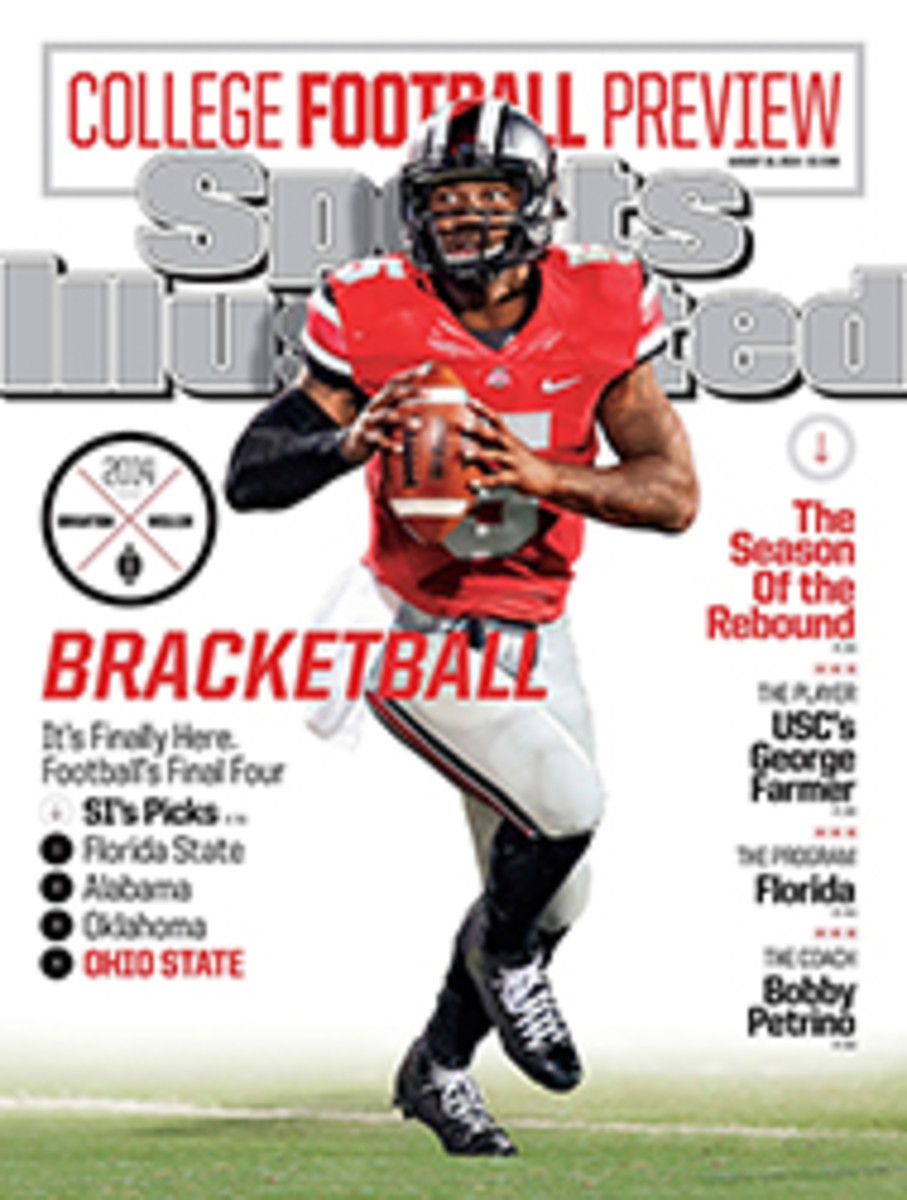
Hungry Huskers
IF NEBRASKA FOOTBALL players know how to drive, then they know how to eat. At least that's been the case since March, when Ryan Reist, 35, joined the school as assistant director of sports nutrition. Reist creates individual meal plans based on a player's age, height, weight, body-fat percentage, resting metabolic rate (how many calories he'd burn if he rested for 24 hours) and, most important, his on-field goals. And he does it using an easy-to-follow traffic-light labeling system: red for comfort foods higher in fat and calories, yellow for more processed, less nutrient-dense options and green for lean and protein-rich choices.
To ensure that players are staying on track, Reist, a registered dietician who worked at Alabama's 2012 fall camp, labels foods to indicate the macronutrient breakdown (one scoop of whole-wheat pasta has 98 calories and 20 grams of carbs, etc.) and serving size.
But unlike the standard red-yellow-green code, Reist's food signals convey different messages for each Nebraska player. For defensive end Randy Gregory (above), red means go. The junior needed to gain 20 pounds after the spring season, so Reist upped his daily intake to between 4,500 and 6,000 calories a day. "I gave him a schedule of when and what to eat," says Reist. "His plate is half starchy carbs, 25% protein and 25% fruits and vegetables." While Gregory met his goal weight and came in under 10% body fat—"probably the leanest guy on the D-line"—sophomore Vincent Valentine needed to lose 10 pounds. Reist advised the defensive tackle to cut extra calories by swapping sports drinks for flavored water and greasy fast-food fare for healthier menu items or home meals.
"We make small changes with them each day so over time it will make a difference," says Reist. "It's a constant message so they can move toward their goal."
BLACKENED SHRIMP PASTA
Comfort foods, casseroles and pasta dishes like chicken and broccoli alfredo that are high in fat and calories are considered red foods.
AU GRATIN POTATOES
Menu items that have a bit more nutritional value and protein but still a significant amount of fat (like lentils with andouille sausage) have a yellow label.
GRILLED FISH
Green foods like mahimahi, vegetables and quinoa are the healthiest options, providing high protein and very little fat.
For a more in-depth look at sports and nutrition for football, visit SI.com/Edge
PHOTO
JOE ROBBINS/GETTY IMAGES (GREGORY)
PHOTO
LAURI PATTERSON/GETTY IMAGES (PASTA)
PHOTO
ROB WHITE/TASTYART LTD./GETTY IMAGES (POTATOES)
PHOTO
RICHARD RUDISILL/GETTY IMAGES (FISH)

